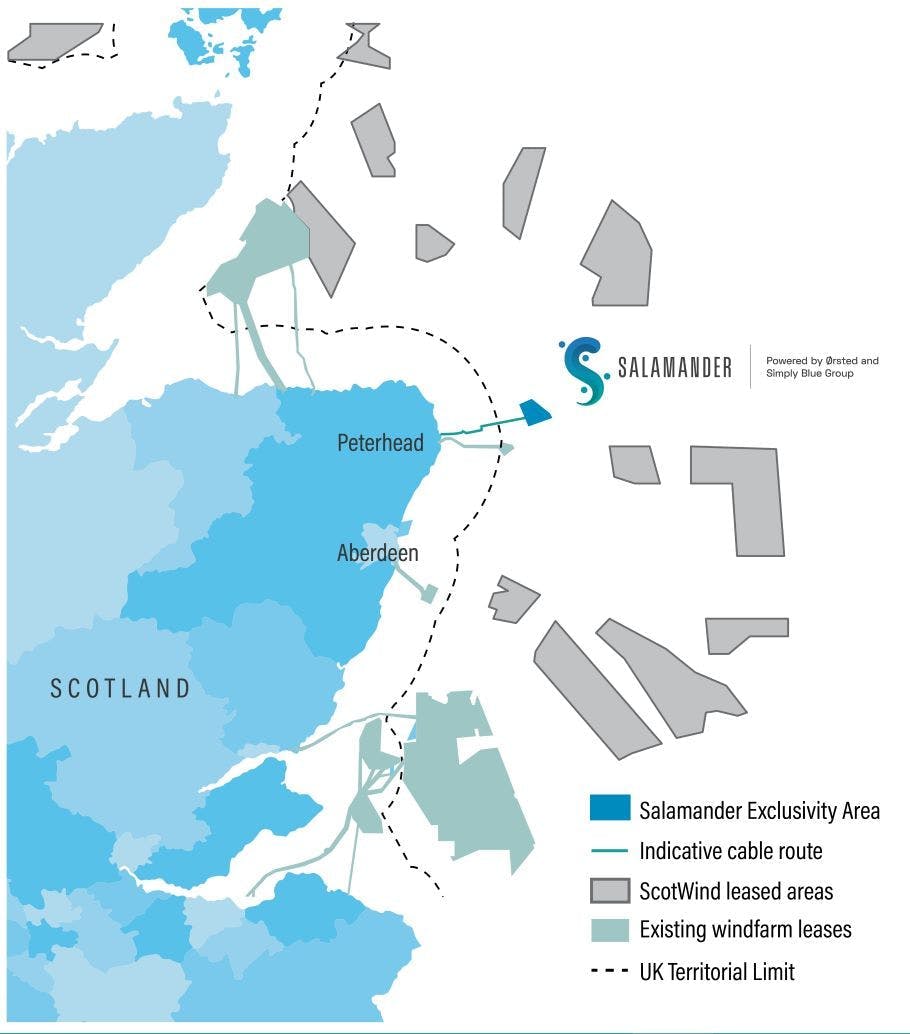Project assessing impact of floating offshore wind on marine life
Offshore staff
EDINBURGH, UK — Salamander, the joint venture between Ørsted, Simply Blue Group and Subsea7, has teamed up with two universities in Scotland to investigate the potential impact of floating wind farm developments on marine ecosystems.
Their PREDICT 2.0 initiative is part of a research program led by the University of the Highlands and Islands’ Environmental Research Institute (UHI) and the University of Aberdeen. Its main aim is to improve understanding of fish migration patterns.
To accommodate future expansion of offshore wind infrastructure, the venture wants to assess impacts not just on fish but also their predators. The proposed 100-MW Salamander site, 35 km from the coast of Peterhead, eastern Scotland, will serve as a monitoring center for compiling data on the causes of variations in fish movement.
Dr Benjamin Williamson, associate professor of Energy at UHI, said, “Robust information and evidence are needed to inform where offshore wind developments should be located to better protect marine ecosystems.”
Specialists will deploy sensors to identify fish presence and behavior around the site, and for assessing how these vary over time.
The initial PREDICT exercise included recommendations on future monitoring techniques.
03.05.2024

